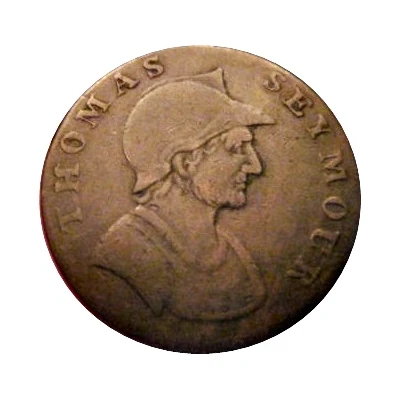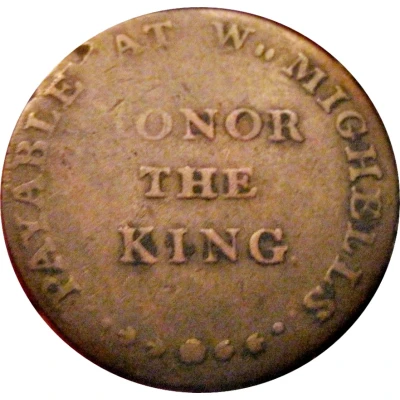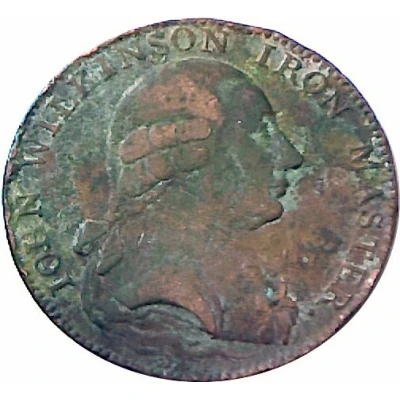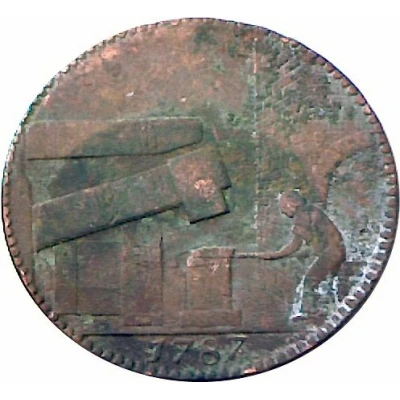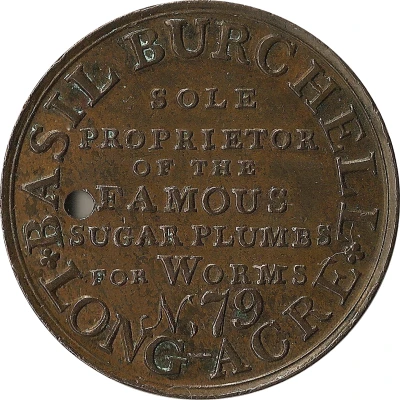
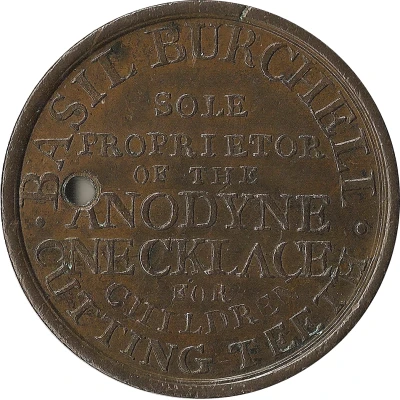

© hernan4950
½ Penny Middlesex - Burchell's / Sugar Plumbs ND
1780 year| Copper | 11.24 g | 29 mm |
| Issuer | United Kingdom (United Kingdom, British Overseas Territories and Crown Dependencies) |
|---|---|
| Type | Token |
| Year | 1780 |
| Value | ½ Penny (1⁄480) |
| Currency | Conder tokens (1787-1797) |
| Composition | Copper |
| Weight | 11.24 g |
| Diameter | 29 mm |
| Shape | Round |
| Technique | Milled |
| Orientation | Coin alignment ↑↓ |
| Demonetized | Yes |
| Updated | 2024-10-09 |
| Numista | N#145538 |
|---|---|
| Rarity index | 91% |
Reverse
Legend across seven horizontal lines, legend around.
Note: the centre legend is lower than any of the others.
Script: Latin
Lettering:
· BASIL BURCHELL ·
SOLE PROPRIETOR OF THE ANODYNE NECKLACE FOR
CHILDREN CUTTING TEETH
Edge
Inscripted
Note: varieties exist
Lettering: THIS IS NOT A COIN BUT A MEDAL . + . + . + . + .
Comment
This piece is currencied at one halfpenny by virtue of its weight and diameter of copper but there is no denomination shown on either face. It may be that the originator is having fun with the edge inscription or it may be a defense against accusations of counterfeiting, at a time when coinage of the realm was scarce.Basil Burchell is responsible for a short series of these pieces from DH#258 to DH#274 (this token); DH#259-273 may be found struck in both copper and white-metal. Dalton & Hamer give no. 274a a rarity rating of RR whilst the others are listed as scarce, especially in fine condition.
Interesting fact
One interesting fact about the Token ½ Penny (Middlesex - Burchell's / Sugar Plumbs) ND (1780) from United Kingdom is that it was used as a form of currency during a time when there was a shortage of official coins. The coin was issued by private companies and individuals, known as token issuers, who were authorized by the government to produce tokens that could be used as currency. This coin, in particular, was issued by Burchell's / Sugar Plumbs, a company that produced sugar plums, and it features an image of a sugar plum on one side and the value of ½ penny on the other. The use of tokens like this one helped to alleviate the shortage of coins and facilitate trade in the United Kingdom during the late 18th century.
